The global economy is built on networks, a fragile web of weak and largely forgotten bottlenecks, a web of cables and pipelines (above and below ground) that are critical to the global supply chain despite their small impact. Many speak of the Achilles’ heel of the wider system, where if there is a deliberate or accidental disruption, the consequences are very severe.
The vital importance of networks was demonstrated by today’s widespread cyber blackout that affected media, retailers, banks, airlines and telecom companies in many parts of the world.
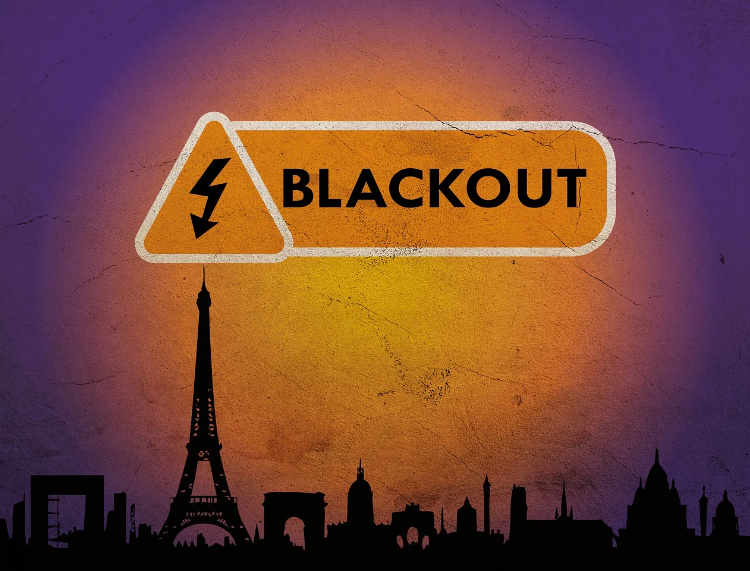
Networks and fears of widespread power outages
In addition to the widespread cyber outages, there is widespread concern that the long 40s in Europe will test the strength of the power system, raising concerns that the June blackout in the Balkans could spread across the continent.
“The overheating is the cause of all the phenomena mentioned in the news reports, with fires, breakdowns and power outages,” Lorenzo Spadoni, head of sales for Southern Europe at Pixii Batteries, commented to Montenegro. “The power outages occur because the transformers go into protection mode, where they are turned off before they are turned on when the oil temperature rises.”
For his part, Antonio Sano, founder of the Italian climate forecasting service Il Meteo, estimates that in the coming days, the African cyclone Sharon is likely to break European heat records.
In Eastern Europe, the heat will be most intense in Serbia, Bulgaria, Hungary, Ukraine, Moldova and the entire Balkan Peninsula.
“They will be greatly affected by temperatures near or even above 40 degrees Celsius for several days,” Sano said. 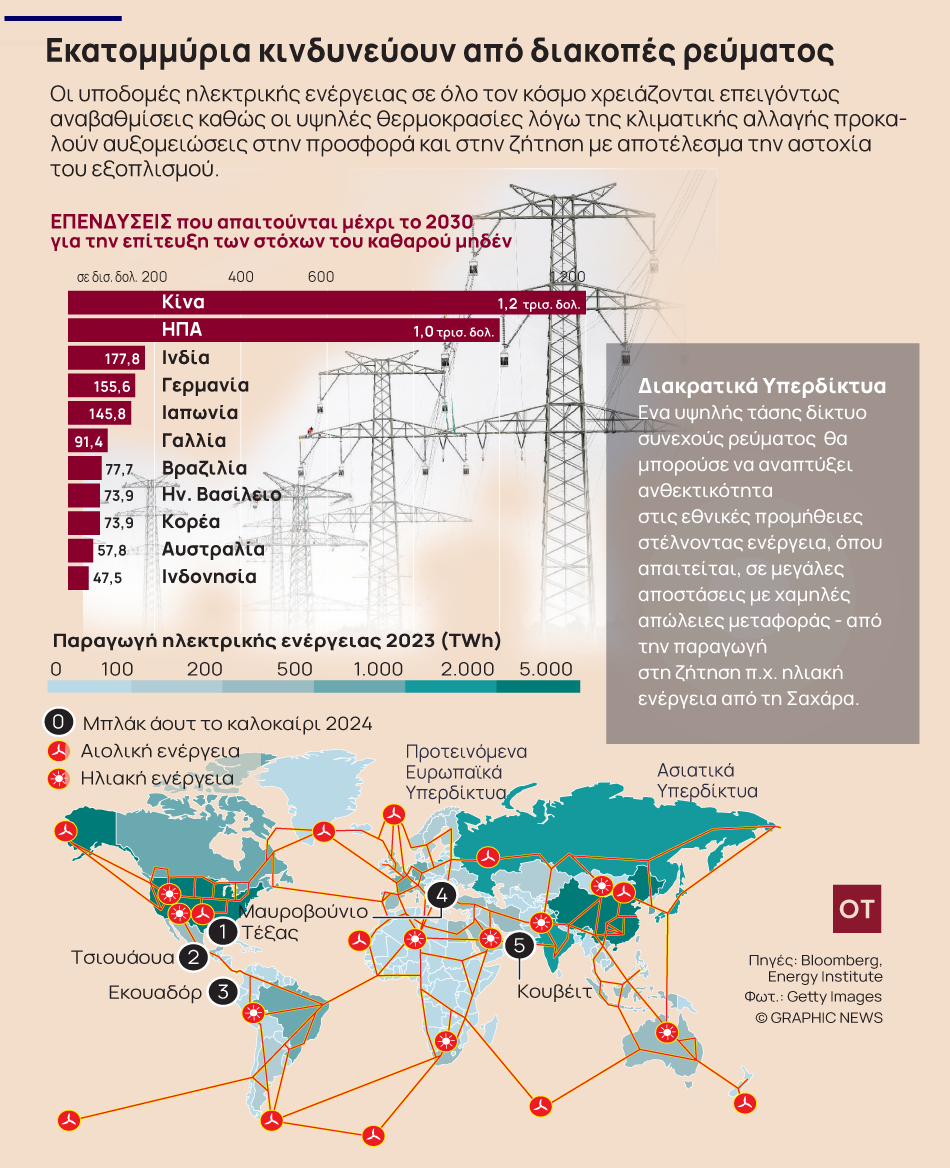

Networks and heat in Spain and Italy
Spain’s meteorological service Aemet has issued an extreme heat warning, predicting temperatures could exceed 44 degrees Celsius.
National average temperatures are expected to reach 27 degrees Celsius by the end of July, about 2 degrees Celsius above normal, according to data from Montel Analytics.
Italy’s commercial capital Milan has also been affected by grid failures, leaving parts of the city without power in recent weeks.
“The main power outages were in Milan. The distributor is A2A and if they don’t strengthen the EV networks and the distributors, the problem will reappear,” Corrado Micozzi, CEO of energy forecasting firm MycSolutions, told Montel.
Domino power outage in networks
It is noteworthy that a domino effect of widespread power outages occurred on June 21 in Albania, Montenegro, Bosnia and part of Croatia due to the blackout in the Western Balkans. Then the interconnected electricity transmission networks in the mentioned countries collapsed under the weight of the increased demand.
Although the grid collapse was limited to the Balkans, there were plenty of alarm bells ringing, warning that millions of people around the world were at risk of widespread power outages. Increasingly hot summers mean a sharp increase in demand for cooling, as high temperatures cause wires to sag and risk sparking wildfires.
Electricity infrastructure upgrades have not kept pace with progress, even as efforts to reduce fossil fuel use make electricity distribution more important.
Networks around the world
And it’s not just Europe’s grids that are affected: As Bloomberg noted in a recent article , millions of Houston households suffered power outages in the wake of Hurricane Beryl, losing air conditioning in the sweltering heat that followed the storm. And lockdowns from Ecuador to India in recent weeks have hit emerging and advanced economies alike, offering a glimpse of what could come.
The climate crisis exposes power grids to flash floods that topple transmission towers, droughts that dry up reservoirs, and increased demand for cooling during heat waves.
“The entire electricity system was built and designed for one climate era, and now it’s being asked to operate in a different climate era,” Michael Weber, an energy professor at the University of Texas at Austin, told Bloomberg. “That just means more things can go wrong.”
Unstable grids create instability for businesses, affect politics and threaten lives. According to BloombergNEF, it would cost an estimated $24.1 trillion to expand the grid to reach net-zero targets by 2050, more than the investment needed in renewable energy capacity. Given their vast landmasses and high energy use, the United States and China face the greatest challenges, but no country is immune.
At the mercy of networks
It can be said that the various networks hold the world an informal “hostage”…
The full scope of this problem was described in a recent analysis by Deutsche Bank, focusing primarily on invisible networks.
The vast majority of global data traffic passes through a few hundred undersea cables. Although satellites carry some data, their bandwidth is limited and they can be intercepted. 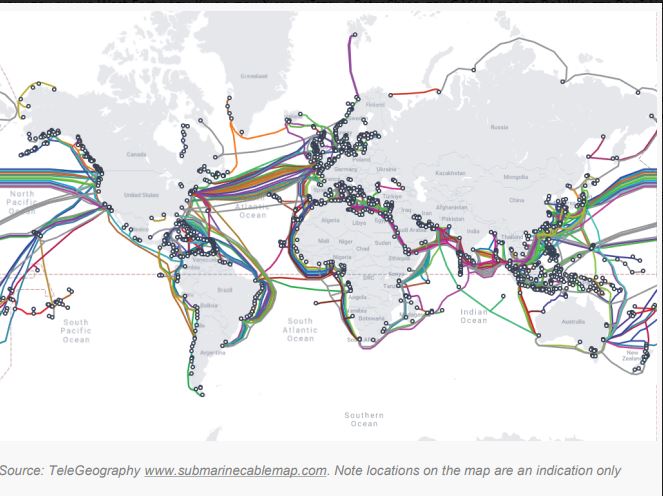
About 99% of international digital communications—and about $10 trillion in financial transactions every day—pass through undersea fiber-optic cables. There are about 550 active and planned cables totaling 1.4 million kilometers.
Cables are much faster and cheaper than satellite: newer cables can carry 300 to 400 terabits per second (TBps).
These investments used to be dominated by leading national telecom companies, particularly in the United States and France, but now many cables are operated by major technology companies (such as Google, Meta, and Microsoft).
Digital Way
This control is of enormous geopolitical importance as China invests in the “Digital Silk Road” and the US blocks cables coming from China and projects linked to Huawei and its spin-off company HMN Tech.
Espionage and sabotage: Cables are buried close to the coast or “settled” on the seabed in remote locations in international waters, outside of regulatory oversight.
US and British officials have warned that unmanned submarines could cut cables or plant explosives, damaging networks.
China and the United States have traded accusations of eavesdropping on phone calls for the purpose of data espionage or cyber attacks (Reuters, July 6).
Accidental damage: More than 100 submarine cables break each year, two-thirds of them due to accidents with fishing boats and anchors. Most of the rest is related to environmental damage (such as currents and earthquakes).
Bottlenecks: Isolated islands (such as Tonga), crossings (such as Guam), and congested passages (such as the Strait of Malacca and Egypt, which connects Europe to Asia). Egypt is the only location where transcontinental cables cross land in a “digital Suez Canal.” Some 16 cables converge in the Red Sea, carrying at least 17% of the world’s internet traffic. 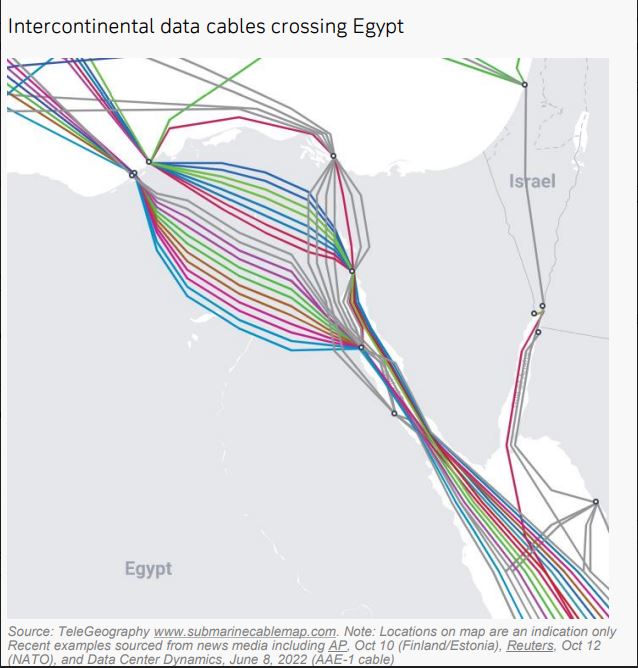
Power wires
International electricity interconnectors are an increasingly attractive option for governments looking to meet renewable energy targets.
Electrical interconnectors allow countries to purchase wind or solar power at a cheaper price from neighbouring countries with more favourable climate conditions, increasing security of supply and managing demand during peak times.
There are nearly 10,000 kilometres of HVDC submarine interconnectors in operation, 70% of which are in Europe. Most are ethnic, but that is changing.
The UK is leading the way, saying it will have at least six interconnectors providing up to 15% of the country’s electricity needs by the end of this year. 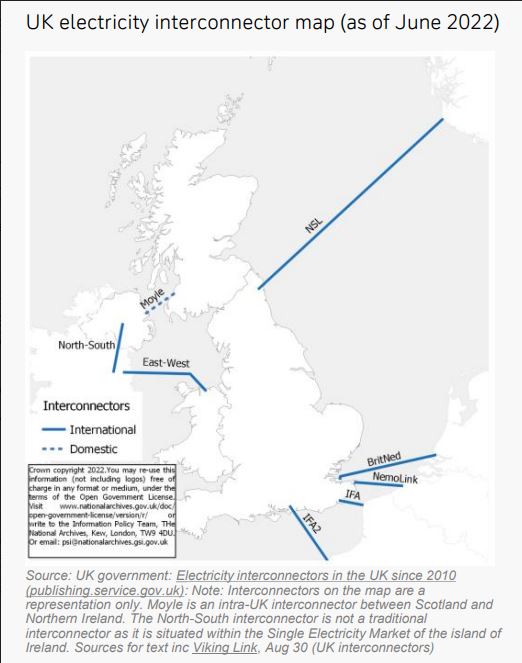
In 2021, it completed the North Sea Interconnector with Norway – the world’s longest subsea interconnection at 720 kilometres, allowing it to export up to 1,400 megawatts of surplus wind power or import the same amount of hydropower. It has four other countries with France, which accounts for half of its energy imports, the Netherlands and Belgium.
There are also plans underway to create undersea connections linking Australia to Singapore, Israel to Greece via Cyprus, and Ireland to France.
Weaknesses
Like data cables, submarine cables are thin and distant and can be damaged by accident or vandalism.
natural gas pipelines
Europe relies on pipelines for the vast majority of its natural gas supplies. It imported nearly 40% of its natural gas needs via pipelines from Russia in 2020. As Russian supplies fell last year, it had to fill the gap via pipelines from Norway and import liquefied natural gas.
Norway is now the main supplier of natural gas to Europe, providing more than a quarter of the total gas, mainly through several large-capacity pipelines.
. 
More than half of the UK’s natural gas imports come from pipelines. Algeria has become Italy’s largest supplier of natural gas, mainly via the TransMed pipeline, and also supplies Spain via the Medgaz pipeline.
Other major natural gas pipelines include the West-East Pipeline across China, operated by PetroChina, the Gazon Pipeline from Bolivia to Brazil, the Yamal-Europe Pipeline from Western Siberia to Austria and Eastern Europe, and the Trans-Sahara Pipeline.
Weaknesses
Sabotage: In September 2022, explosions occurred on the Nord Stream pipelines – controlled by Russia’s Gazprom.
Nord Stream is the world’s longest undersea natural gas pipeline, running 1,224 kilometers (760 miles) across the Baltic Sea from Russia to Germany. The twin pipelines provided half of Russia’s exports to Europe in the fourth quarter of 2021 and accounted for 18% of Europe’s gas imports. However, the energy channel may never reopen.
DB also notes in its report that Russia has denied causing the recent damage to the pipeline between Finland and Estonia.
oil pipelines
Europe has recently been linked by Russian oil pipelines. One of the world’s largest, the Druzhba (“Friendship”) River, runs from Russia to Belarus where it splits in the northern branch into Poland and Germany in the southern branch through Ukraine to Eastern Europe. It has been largely inactive since the European Union imposed sanctions over the war in Ukraine. 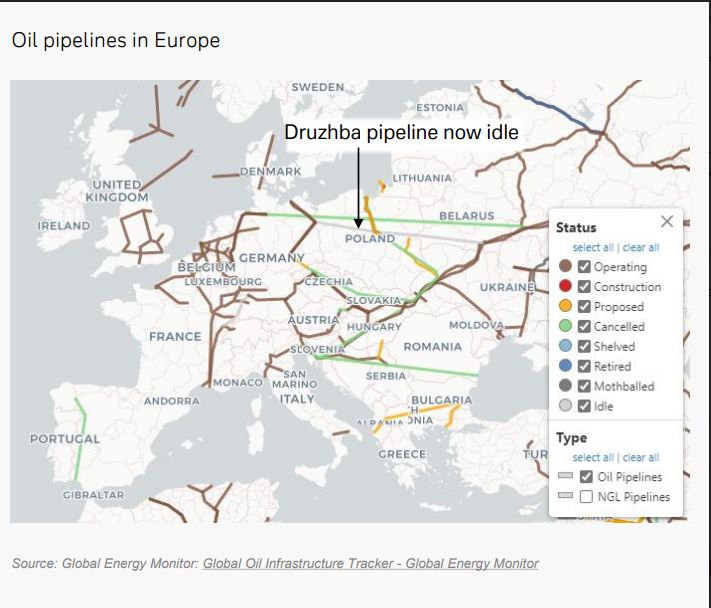
Other major cross-border oil pipelines include the East Siberia-Pacific Ocean Pipeline (ESPO) from Russia to China, operated by Transneft, the Keystone Pipeline from Alberta, Canada to the US Midwest and Gulf Coast, and the Kazakhstan-China Pipeline.
Weaknesses
Oil pipelines are usually made of steel and are buried where possible. Like gas pipelines, they are susceptible to damage.
Last December, more than 500,000 gallons of crude oil leaked from the Keystone pipeline due to a weld failure.





More Stories
“Recycling – Changing the water heater”: the possibility of paying the financing to the institution once or partially
Libya: US General Meets Haftar Amid Tensions Between Governments
New tax exemption package and incentives for business and corporate mergers..